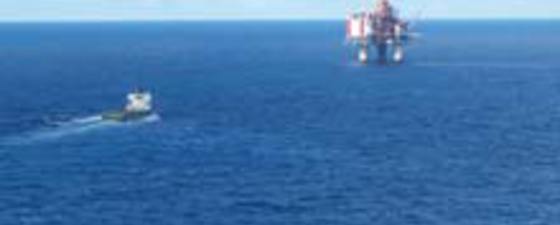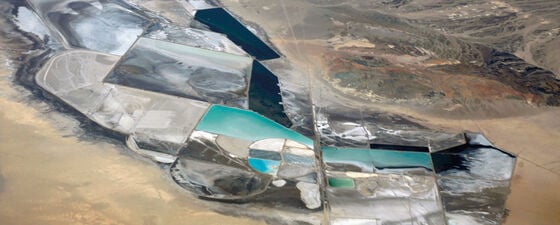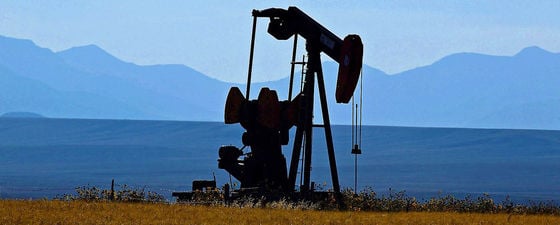Giant fields (>500MMbo) dominate the oil production profile on the Norwegian continental shelf, but no giants have been found lately to replace the inevitable decline that started at the beginning of the new millennium. This is the essence of the summary of 40 years of oil production following the discovery of Ekofisk in 1969, as is undertaken by the Norwegian Petroleum Directorate (NPD) in their recent Resource Report (www.npd.no).
The report also highlights the fact that much of the oil and gas production comes from discoveries made in the first 20 years, during the period between 1969 and 1989. Resource growth from discoveries made in the last decade is low, and they provide only a small contribution to future production.
Most oil left in the ground
 The production profile of the Norwegian continental shelf over 28 years since 1971 illustrates that oil output is now declining, while gas production is still increasing. Illustration: The Norwegian Petroleum DirectorateAbout one-fourth of the NPD’s estimated recoverable petroleum on the Norwegian shelf is classified as reserves, which in Norwegian terms means oil and gas with approved production plans (PDO). Increases in the reserves take place when discoveries are made that can either be developed independently or phased in to existing fields, or through the implementation of measures to improve recovery.
The production profile of the Norwegian continental shelf over 28 years since 1971 illustrates that oil output is now declining, while gas production is still increasing. Illustration: The Norwegian Petroleum DirectorateAbout one-fourth of the NPD’s estimated recoverable petroleum on the Norwegian shelf is classified as reserves, which in Norwegian terms means oil and gas with approved production plans (PDO). Increases in the reserves take place when discoveries are made that can either be developed independently or phased in to existing fields, or through the implementation of measures to improve recovery.
“Reserve growth in the last couple of years has been very low,” NPD states. In 2005, this government body set a goal of increasing the oil reserves on the Norwegian shelf by 800 million Sm3 (5 billion barrels) by 2015, which is the equivalent of a supergiant field (see page 82 for definitions). It now appears that this goal may be difficult to achieve, and it is assumed that about 75% of the growth in reserves must come from fields already in operation. This is in slight disagreement with the Norwegian supermajor StatoilHydro, which seems to have a more optimistic view of the future.
It is an astonishing fact that, with current technology, and existing plans, 54 per cent of the oil will be left in the ground when production ceases. The NPD believes, however, that production can be increased beyond the planned level by using new methods to improve oil recovery, as has been demonstrated in the Statfjord Field. So far, well over 60% of the stock tank oil originally in place has been extracted. In the coming years recovery is expected to increase to 68%.
The companies on the Norwegian shelf work continuously to improve recovery from the fields using various measures. Gas injection has been proven to be a very effective method, and so far, about 260 million Sm3 (1,6Bbo) of additional oil has been produced by this means. According to the companies’ approved plans, the final result will be even better, as it is estimated that additional production will rise by 60 – 100 million Sm3 (380-630MMbo).
The implementation of new knowledge and new technology can result in significant gains, NPD says, but “it will require extensive cooperation both among the oil companies and with the authorities in order to qualify and test new technologies on the fields”.
Disappointment in deep water
 Oil production on the Norwegian continental shelf, which started modestly with Ekofisk in 1971, is on its way down after peaking in 2000. Altogether 70 fields have been in production, of which 12 are now closed down. The lower hatched areas show yearly production from giant fields (fields with reserves of more than 80 million m3 (500 MMbo)), other than the five biggest contributors (Ekofisk, Statfjord, Oseberg, Gullfaks and Troll), while the upper hatched area shows the contribution from non-giant fields, smaller than 80 million m3 (500 MMbo). Illustration: The Norwegian Petroleum Directorate
Oil production on the Norwegian continental shelf, which started modestly with Ekofisk in 1971, is on its way down after peaking in 2000. Altogether 70 fields have been in production, of which 12 are now closed down. The lower hatched areas show yearly production from giant fields (fields with reserves of more than 80 million m3 (500 MMbo)), other than the five biggest contributors (Ekofisk, Statfjord, Oseberg, Gullfaks and Troll), while the upper hatched area shows the contribution from non-giant fields, smaller than 80 million m3 (500 MMbo). Illustration: The Norwegian Petroleum Directorate Creaming curve for the Norwegian North Sea.Exploration in deep water (>600m) frontier areas has been disappointing since its initiation in the Norwegian Sea in 1994. Altogether 23 wells have been drilled, and the first ones tested huge structures. Some discoveries were made, but the size of them was much smaller than anticipated.
Creaming curve for the Norwegian North Sea.Exploration in deep water (>600m) frontier areas has been disappointing since its initiation in the Norwegian Sea in 1994. Altogether 23 wells have been drilled, and the first ones tested huge structures. Some discoveries were made, but the size of them was much smaller than anticipated.
The only find that has been put on stream from this area so far is Ormen Lange, a giant gas field discovered in 1997, with proven reserves of 394Bm3 (2,5Bboe) of gas in Paleocene sandstones. Further gas discoveries, however, were made in both 2008 and 2009 (see page 75), which may warrant the building of infrastructure in deep water north of Ormen Lange. The final outcome will depend on several appraisal wells that are still in the planning stage.




